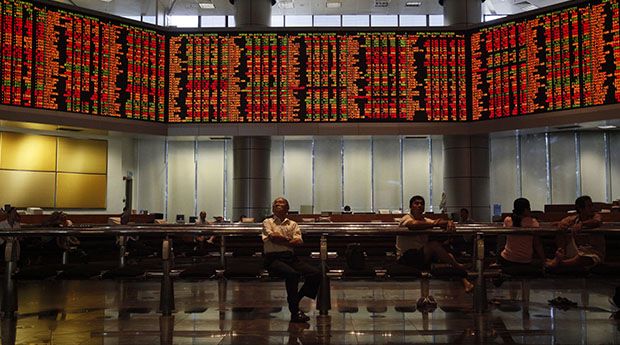Political turmoil and a weak ringgit have hampered sukuk issuance from Malaysia this year, but demand for longer-tenor paper means that the outlook remains positive
Malaysia’s national day at the end of August is normally a time for celebration as large crowds wave flags in Independence Square and watch the air-force stage a fly-past. But this year had a different tone. The weekend before the holiday was marked by protesters in yellow shirts throughout Kuala Lumpur.
The popularity of Prime Minister Najib Razak is at an all-time low after it was alleged that about US$700m had been deposited in his personal bank account over the past two years by troubled strategic state fund 1Malaysia Development Bhd.
Although Razak has denied the charges, people are all too ready to believe them. His personal credibility had declined after the implementation of a hated 6% goods and services tax earlier this year and a blatant clampdown on critical media. All this has happened against a backdrop of a continuously falling Malaysian ringgit.
At the time of writing the currency sits at a 17-year low against the US dollar; indeed, it has so far dropped by 18% this year and more than 10% in the last month (August) alone. As the worst performer among 24 emerging market exchange rates, it is even trailing the Russian rouble.
Gloom upon gloom has hit the markets hard; especially debt issuance. As the world’s largest and deepest Islamic bond issuance centre, accounting for a sizeable 42.3% of the global sukuk market according to Reuters, Pollyannas at the start of the year were expecting to see US$115bn of global sukuk debt this year.
But in July, after the Central Bank of Malaysia – one of the largest issuers of sukuk worldwide – stopped issuance, ratings agency Standard & Poor’s halved its forecast for global sukuk issuance to a maximum of US$60bn.
“In the first half of 2015, the Central Bank of Malaysia’s [BNM] pull-back saw total sukuk issuance drop by 42.5% compared with the same period a year earlier,” said Mohamed Damak, Standard & Poor’s global head of Islamic finance. “In 2014, BNM alone issued about US$45bn of sukuk out of total issuance of US$116.4bn.”
Several months on, the outlook for issuance from Malaysia is not great. Most bankers reckon that volumes will be 15%–20% down on last year.
“If you take out government-owned issuances, I am expecting around M$40bn–$45bn [US$9.5bn–$10.7bn] of corporate sukuk deals to be completed for the year, accounting for approximately 75% of total Malaysian ringgit corporate issuances for 2015. These are obviously dependent upon, among others, specific funding requirements and market conditions,” said Safri Shahul Hamid, senior managing director and deputy CEO of CIMB Islamic.
This is where the weakness of the ringgit comes into play. It is no surprise that the figure of a decline of 15%–20% more or less corresponds with the percentage of sukuk issuance that comes from foreign issuers.
“There is absolutely no point in a Turkish bank, for example, doing a sukuk issue at the moment. The volatility is too high,” said one foreign banker. “There is some merit in sitting on dry powder at the moment.”
And that is exactly what is happening. Although bankers say they are not seeing foreigners exit on the fixed-income side just yet, nor, with everything going on, are foreign issuers prepared to commit themselves.
Where demand remains is from domestic issuers, especially where refinancing is needed, but few believe that any new entrants to the market are going to stick their heads above the parapet this side of the new year.
All of this is, of course, bad news but there are silver linings to every cloud. In this case it emerged in the form of Malaysia’s US$1.5bn in Islamic 144A/Reg S bonds in April.
US$500m of the two-tranche paper, sold through CIMB, HSBC and Standard Chartered, had a 30-year tenor, the world’s first such sukuk paper. Not only was there significant demand for the paper (the books reached US$9bn) but enthusiasm was such that the sovereign did not pay the typical Islamic premium.
Flying slightly below the radar, there has been a natural evolution within the Malaysian market towards longer-tenor bonds. It is being driven by demand. While the Middle East does not have the same tenor demand, Malaysia certainly has the institutional base that requires long-dated paper.
“We have a number of borrowers, like pension funds, that have built up in Malaysia and want paper with a longer tenor,” said Rafe Haneef, chief executive of HSBC Amanah Malaysia.
What this has meant is the quiet evolution of project bonds as investor interest in project finance remains high.
“We are seeing continued interest in project finance and infrastructure-backed sukuk, mainly because our investors, the likes of pension funds, fund managers, insurance and takaful companies, are hungry for high-quality paper. Demand remains high,” said CIMB’s Hamid.
There are few doubts that project bonds can work. The Kuala Lumpur International Airport sold M$4.06bn of government-guaranteed sukuk in 2003 to help finance the construction of the KLIA International Airport. The sukuk reached maturity earlier this year with no road bumps along the way.
“We are seeing continued interest in project finance and infrastructure-backed sukuk mainly because our investors, the likes of pension funds, fund managers, insurance and takaful companies, are hungry for high-quality paper”
And longer-dated paper has proved popular too. Earlier this year DanaInfra Nasional, a company created by Malaysia’s finance ministry to finance the Klang Valley mass rapid transit system, raised M$3.5bn in a multi-tranche bond issue, with the longest M$1bn tranche going out to 30 years.
It is no surprise then that the bright light on the horizon and the deal that all are watching for is the Islamic project bond offering from state-owned utility Tenaga Nasional to fund the greenfield Jimah East power plant.
At the end of July, CIMB, HSBC and Maybank were appointed as joint lead managers for the M$11.7bn greenfield 2,000MW coal-fired project, up to M$9.5bn of which will be raised through debt.
Few are surprised to see the evolution and increasing sophistication of the sukuk product. It is, of course, now 30 years old.
“The sukuk market is long established and functions in an effective manner. Issuers are familiar and the pool of investor liquidity is deep. Of course, it is ripe for innovation and development,” said Aaron Russell-Davison, head of DCM at Standard Chartered.
All of this makes the current domestic and international travails so frustrating. While the investment outlook for Malaysia – indeed for all of Asia at the moment, given the challenges that the Chinese economy is throwing out – might seem problematic at the moment, most bankers believe that any pain is going to be short-lived.
“The investment environment by the end of the fourth quarter is going to be much more constructive than it might appear now,” said Russell-Davison. “The recent volatility might appear brutal, but it’s likely short term.”
But Malaysia itself still needs to work out where it wants to be. Few in the business community believe that Razak will survive as prime minister much beyond year-end. And although it is hard to find anyone who thinks the problem is terminal, the general view is that the events of the past few months have shone a spotlight on Malaysia’s inability to react to adverse conditions.
To maintain the credibility and the good-will that it has earned, as one banker said: “Malaysia is going to have to cauterise the bad news.”
The birth of SRI sukuk deals
Earlier this year, sovereign wealth fund Khazanah Nasional issued Malaysia’s first social-impact sukuk.
The privately placed deal, which appeared at the end of May, was comparatively small – it came in at M$100m (US$27m) – but its significance for the market is huge.
“The social impact sukuk is a new and powerful concept and investor awareness and responsiveness will increase further over time. It’s a modest but good start,” said Khazanah managing director, Tan Sri Dato’ Azman Hj. Mokhtar.
What makes the sukuk issue so clever is its structure. Proceeds will be used to fund 20 schools under the Yayasan AMIR Trust School Programme. This is a not-for-profit foundation incorporated by Khazanah to improve accessibility of quality education in Malaysian government schools through a public-private partnership with the Ministry of Education.
The deal, which was led by CIMB with Amanie Advisors and CIMB Islamic as sharia advisers, was priced at 50bp over equivalent government securities, to yield 4.3% for the seven-year paper.
But built into the paper is what has been dubbed a “pay for success” structure. This measures key performance indicators against a five-year timeframe. If, at maturity in 2022, these KPIs are fully met, then sukuk holders will forgo up to 6.22% of the nominal value due under the sukuk.
That means that the yield on the paper drops to 3.5% if the KPIs are achieved.
Safri Shahul Hamid, senior managing director and deputy chief executive of CIMB Islamic, said it took longer than normal to educate investors on the deal. It is not an easy sell to explain that bond-holders would be rewarded for issuer success with a lower coupon, and no surprise then that the deal took seven or eight months of roadshowing.
“SRI sukuk are very new,” he said. “But Khazanah wanted to do something special being a strong proponent of Islamic finance not only in Malaysia but also in the global arena.”
In and of itself the deal is a novelty, albeit an intriguing one, but there is clearly more to come.
“SRI investors are increasing by the day,” said Rafe Haneef, chief executive of HSBC Amanah Malaysia.
For a start, the Khazanah issue was made under a M$1bn Sukuk Ihsan programme that was rated AAA by RAM at the end of April, the first social-impact bond to be rated globally. While few explicit indications have been given when the next issues might emerge, they are likely to be annual and focus on healthcare as well as educational projects.
But there is a chance that this could turn into something more. Several bankers point out that public pension funds in Malaysia have 20% of their capacity dedicated to socially responsible investing.
The Khazanah deal itself was oversubscribed – albeit marginally – and the book was made up of a mixtures of corporations, banks and asset management companies, as well as pension funds. With the demand and the need for paper clearly there, there is no doubt that more will follow.
As Khazanah’s managing director said: “This is impact investing at its best, whilst being executed at competitive rates”.
To see the digital version of this report, please click here
To purchase printed copies or a PDF of this report, please email gloria.balbastro@thomsonreuters.com

